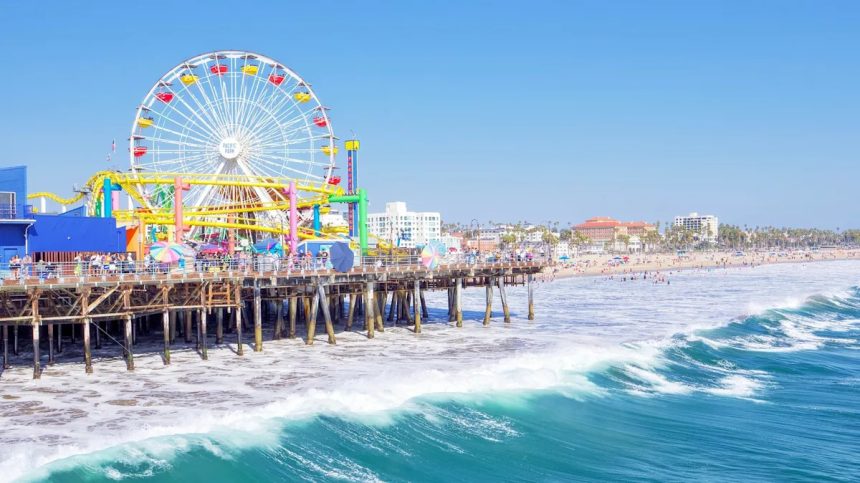In a state where everything costs a lot — food, housing, and transportation — it’s a pleasant surprise that California’s beloved and mythologized beaches, including some of the best in the world, provide a free pastime. Whether you walk the coastline, read a book, tan in the sun, or play spikeball with family or friends, the only thing you may pay for is parking, especially for those who find it difficult to parallel park along busy highways. Yet such coastal recreation is a surprisingly big economic engine for the Golden State. According to the Orange County Register, California’s 437 beaches and 631 miles of warm, pleasant sand fuel tax revenue and jobs, accounting for $30.1 billion in visitor spending in 2023.
However, that economic impact is under threat as beaches weather erosion. As sea levels rise and climate change increases the intensity of storms, the U.S. Geological Survey estimates that California could lose up to 75 percent of its coastline by 2100. A conference entitled the “Business of Beaches” was held last year at the University of California Irvine, drawing economists, educators, and politicians to explore different coastal resilience strategies. Building sea walls and managing retreat by restoring the shoreline with vegetation and dunes are the more expensive, complicated fixes. Beach nourishment, or adding sand to beaches, is the quicker alternative that cities have already undertaken. The San Diego Association of Governments has already coordinated two beach replenishment projects in the past 20 years and is working on a third to place sand at 15 San Diego County sites and three more in Orange County. The organization told SFGATE that such replenishment cost about $23 million but is expected to generate $10 billion in San Diego County in the next 10 years.
Read more: 15 Underrated Vineyards To Visit In California
The future of California beaches
Replenishment project along shoreline of San Clemente – Mario Tama/Getty Images
San Diego represents one example of how agencies are responding to a potential disaster. The Orange County Transportation Authority is leading an over-$300 million project along the Pacific coast in San Clemente to stabilize the railroad line impacted by recent landslides and closures. Crews have placed thousands of pounds of boulders and rock along the rail line and have recently begun the process of adding 540,000 cubic yards of sand in the hopes of protecting this vital resource. The OC Register reports that Orange County’s GDP from the coast economy is estimated at $4.3 billion, and the citizen advocacy group Save Our Beaches in San Clemente, considered a beach town that rivals the Caribbean, estimates that the beaches generate $37 million annually in tourism revenue. Another model for climate adaptation is the recent approval by the California Coastal Commission to restore 38.5 acres of native dune habitat along Santa Monica State Beach.
With the tab growing to protect California’s coastal future, the worry looms about sources of funding. Currently, a mix of federal, state, and municipal dollars supports most projects, but that pool is already shrinking. The federal budget ended funding for beach erosion and mitigation projects in 2025. So local taxpayers may be on the hook in the future, even if they’re reluctant. San Clemente voters in June 2025 rejected a measure to increase their sales tax to support beach protection.
Without a doubt, the stakes are high for California to continue to look for ways to fortify its beaches. In the meantime, crowds will still descend on these less-sandy shores, contributing to the region’s economies. A survey from the California Coastal Conservancy found that 20 million California adults, or two-thirds of the state’s adult population, visit the beach yearly. To see as many beaches as possible, they can embark on an awe-inspiring road trip along California’s coast.
Ready to discover more hidden gems and expert travel tips? Subscribe to our free newsletter for access to the world’s best-kept travel secrets.
Read the original article on Islands.









